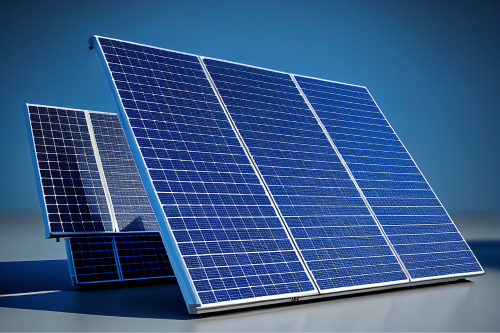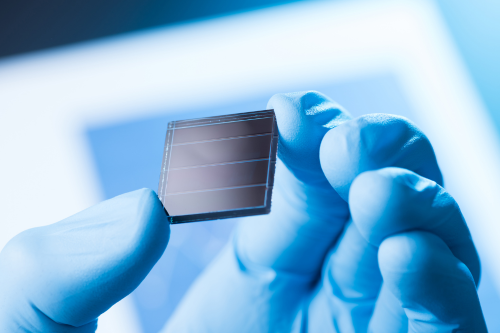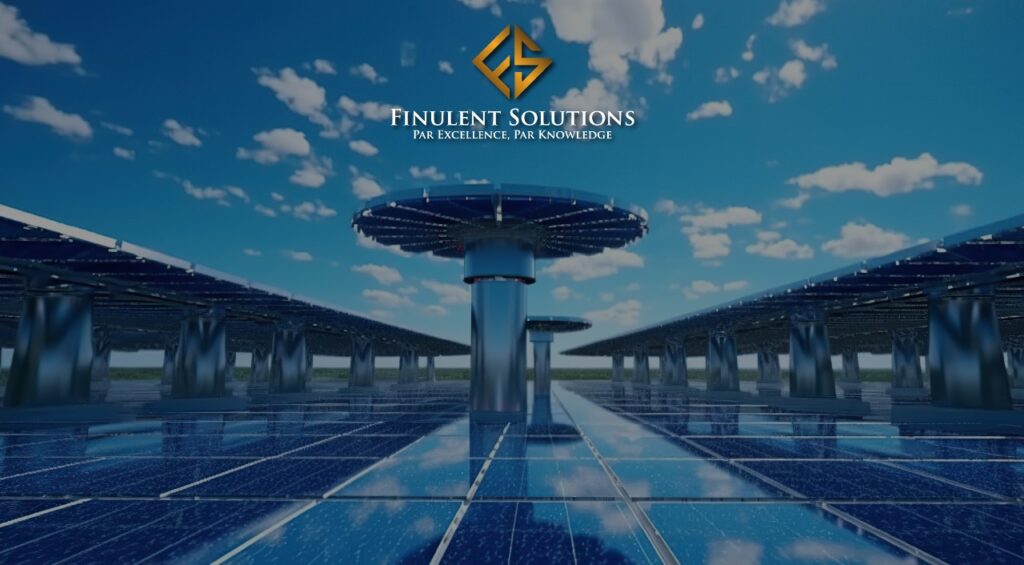The world of solar innovations has reached new heights and 2024 is the year technology and sustainability intertwine. As businesses increasingly move towards renewable energy solutions, grasping the upcoming trends isn’t just beneficial—it’s essential.
Join us as we explore the intricate landscape of solar innovations and dive deeper than the surface of solar panels to unveil the core technologies driving the future. Discover the trends that will sculpt the energy landscape for businesses not just in 2024, but far into the future.
2024 Solar Innovations
Bifacial Solar Panels

Bifacial solar panels are emerging as a game-changer in the solar industry, presenting exciting opportunities for businesses, homeowners, and utility companies. These innovative panels are designed to capture sunlight from both sides, resulting in increased energy production compared to conventional monofacial panels. Furthermore, bifacial panels boast enhanced durability as both sides are UV resistant, and concerns related to potential-induced degradation (PID) are minimized, particularly when the bifacial module is frameless. Additionally, the costs of the balance of system (BOS) are reduced when more power can be generated from bifacial modules within a smaller array footprint.
Compared to traditional panels, bifacial panels generate up to 30% more energy, maximizing investment and reducing energy bills. This is particularly beneficial in areas with high levels of reflected sunlight, such as rooftops with white reflective membranes or open fields with light-colored gravel. Bifacial panels are particularly well-suited for ground-mounted solar systems, where they can benefit from reflected sunlight from the ground. They can also be effective on sloped rooftops or vertical installations, capturing morning and evening sunlight.
With ongoing advancements and cost reductions, bifacial solar panels are poised for widespread adoption in the coming years. They have the potential to significantly increase the efficiency and competitiveness of solar energy, making it an even more attractive option for various applications.
Heterojunction Solar Cell (HJT) Technology

HJT technology, also known as Silicon Heterojunctions (SHJ) or Heterojunction with Intrinsic Thin Layer (HIT), represents a promising path in the realm of solar energy. Unlike conventional solar cells made from a single type of silicon (homogenous), HJT cells employ a “heterojunction” structure. This means they combine crystalline silicon wafers sandwiched between thin amorphous silicon layers. This clever design leverages the strengths of both materials — crystalline silicon (forms the core, responsible for the main light absorption and electricity generation) and amorphous silicon (acts as a “passivation layer,” minimizing recombination losses and boosting efficiency)
This unique architecture unlocks several advantages, such as boosting record efficiencies exceeding 25%, exhibiting lower efficiency drops at elevated temperatures compared to standard cells, and maintaining better performance even under weaker light conditions.
It stands out for its exceptional efficiency, potential for lower costs, and unique design. This solar cell combines crystalline and thin-film technologies with high-efficiency cells and is poised to become the second-most adopted commercial solar cell type.
TOPCon Solar Technology

TOPCon, or Tunnel Oxide Passivated Contact, technology is aiming to improve efficiency and affordability compared to traditional silicon cells. Similar to its predecessor, PERC (Passivated Emitter Rear Contact) technology, TOPCon utilizes a p-type silicon wafer as the core light-absorbing layer. However, it introduces a crucial addition: an ultra-thin tunnel oxide layer sandwiched between the wafer and a highly doped polysilicon layer. This layer acts as a passivation barrier, reducing electron and hole recombination losses within the cell, ultimately leading to increased efficiency.
TOPCon cells offer a compelling choice in solar technology due to their high efficiency, exceeding 27%, surpassing the typical limit of PERC cells at around 24%. This translates to maximized electricity generation from the same sunlight exposure, enhancing overall system output.
A key advantage of TOPCon cells is their lower temperature sensitivity compared to PERC cells, ensuring consistent performance in hotter climates and suitability for diverse geographical regions.
Additionally, TOPCon’s streamlined manufacturing process builds upon existing PERC infrastructure, requiring minimal adjustments. This simplicity not only facilitates seamless integration but also holds the potential to reduce production costs over time, making TOPCon a cost-effective and attractive choice for wider adoption compared to other high-efficiency technologies like HJT (Heterojunction with Intrinsic Thin Layer).
Sun-Tracking Solar Cells

Sun-tracking solar cells, also known as solar trackers, are exactly what they sound like, solar panels that move throughout the day to follow the sun’s path across the sky. This allows them to capture more sunlight, increasing their energy output compared to static panels.
Sun-tracking systems for solar panels come in two main types: single-axis trackers follow the sun’s horizontal movement, while dual-axis trackers rotate panels along both horizontal and vertical axes. These systems use technologies like light sensors or GPS tracking to adjust panel angles and optimize orientation.
The benefits of sun-tracking solar cells include increased energy production (20-40% more than fixed panels, especially in regions with high sun movement), improved efficiency due to constant sun alignment, and reduced land use requirements as fewer panels are needed. This makes sun-tracking systems a compelling choice for optimizing solar energy production.
Conclusion
In conclusion, the solar industry in 2024 represents a landscape of innovation, sustainability, and boundless potential. As businesses, homeowners, and utility companies increasingly embrace renewable energy solutions, the importance of understanding and leveraging solar innovations becomes more pronounced than ever.
Each passing year brings new solar innovations and it’s evident that the future of energy lies in harnessing the power of the sun. The journey doesn’t end here; it’s a continuous evolution towards a cleaner, more sustainable energy future.
Want to learn more about solar innovations and technologies? Subscribe to Finulent
Check out our monthly newsletters, upcoming blogs, and the latest industry news to stay on top of the renewable energy game.

